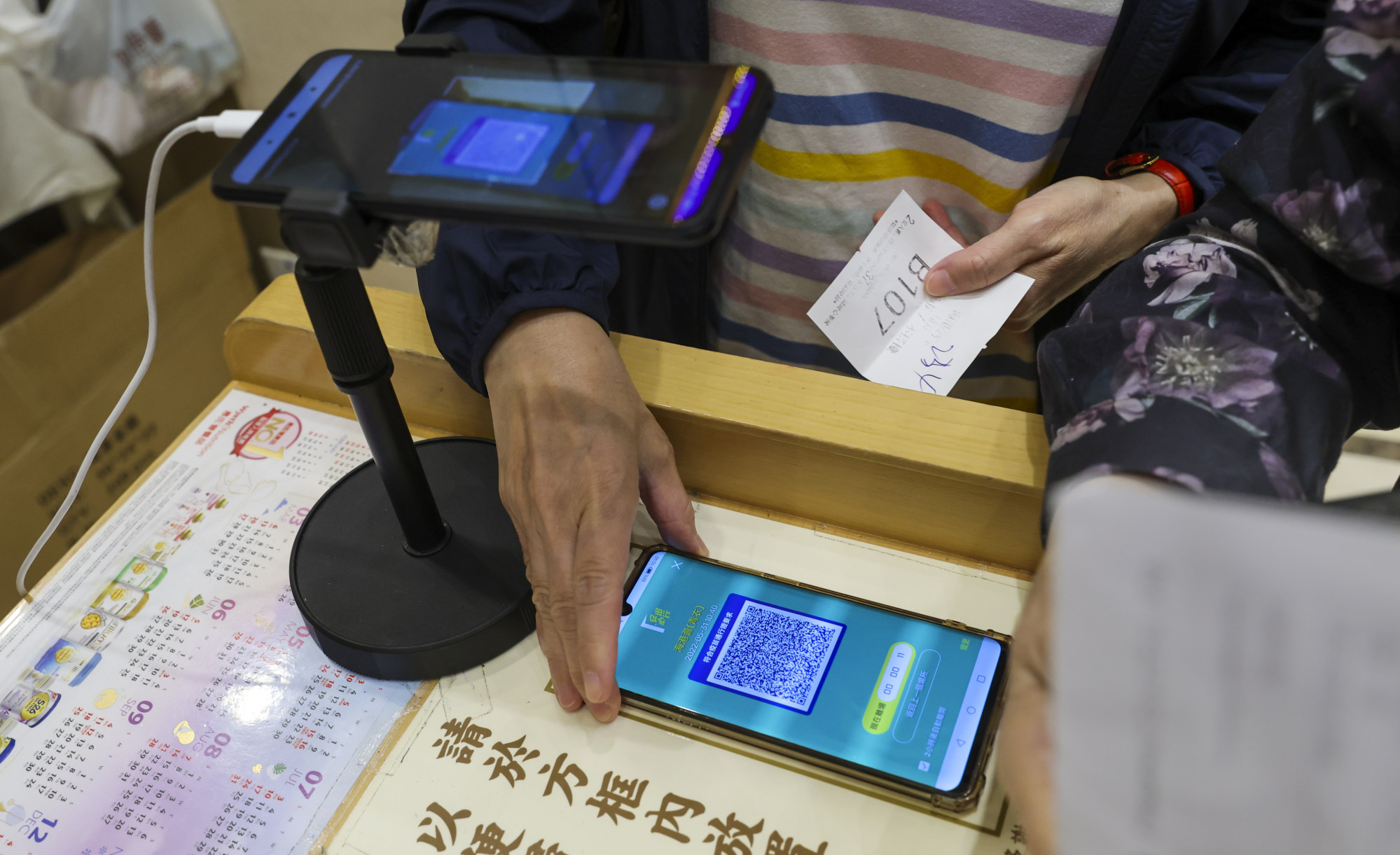
Hong Kong’s use of electronic tracking wristbands not ‘foolproof’ solution to deter Covid-19 patients from breaching quarantine, experts say
- Experts call for rethink of Covid-19 policies given rebound in infection numbers, as new health minister reveals plans for colour-coded system for patients
- Strictly enforcing a seven-day home isolation for patients without proper government support could lead to unintended consequences, they warn
A mainland Chinese-style three-colour system was also considered “fraught with loopholes” as patients could still access public transport and go to work, the experts added, as they called for a deeper rethink of Hong Kong’s Covid-19 policies with the rebound in infections.
The experts said strictly enforcing a seven-day home isolation for patients without proper government support could lead to unintended consequences.

“How can those elderly residents living alone buy food and daily necessities without leaving their home for seven days? What happens when the breadwinners in a family can’t go out to work and make a living? Not everyone can work from home,” said Dr Joseph Tsang Kay-yan, co-chairman of the Medical Association’s advisory committee on communicable diseases.
Since taking office on July 1, Secretary of Health Professor Lo Chung-mau has embarked on a policy blitz, including halting the city’s flight suspension mechanism and indicating a wider overhaul of its tough quarantine regime for overseas arrivals.
Over the weekend, Lo said he planned to introduce a real-name registration system for the government’s “Leave Home Safe” risk-exposure app, a component of the vaccine pass scheme required for entry into premises such as restaurants and entertainment venues.
Lo said the system would have colour codes to identify patients and high-risk individuals, with red denoting a positive Covid-19 result and yellow representing an active quarantine status for arrivals, both of which would deny users entry into “high-risk” venues.
“Everyone agrees that those who have Covid-19 should actually not go out and harm the rest of the population,” Lo said on Sunday. “If we … let [Covid-19 patients] roam the [city], those without Covid-19 will have their freedoms affected.”
Hong Kong Covid-19 app to use colour codes to track patients: health chief
On Monday, the minister revealed that electronic wristbands, most recently required for all self-isolating patients and overseas arrivals during the city’s fifth Covid-19 wave, would be reinstated as a requirement for home-isolating patients from Friday.
Currently, individuals who test positive but are deemed suitable to be quarantined at home are usually required to undergo a two-week isolation period. Those with at least two doses of a Covid-19 vaccine will be allowed to leave home after testing negative for two days in a row.
But Tsang said he believed the new approach was still flawed and questioned the sensitivity of the wristbands.
“There have long been questions about the accuracy of those wristbands, such as whether someone could just take them off and hang them at home,” Tsang said. “Would those wristbands be sensitive enough to detect a person leaving their home and going from the 16th floor of a building to the third floor, for example?”
According to the government, people starting their quarantine have to activate the wristband by “walking slowly” in their home for one minute.
During the quarantine, the app will analyse communication signals, such as Bluetooth, Wi-fi and GPS, in the neighbourhood and “their respective strengths”.
If a change in such signals is detected and officers judge that a person has left the quarantine place, law enforcers may conduct spot checks, make an arrest or issue a warrant.

Technology experts have raised similar concerns. Francis Fong Po-kiu, honorary president of the Hong Kong Information Technology Federation, said the wristband, operated in conjunction with the government’s “Stay Home Safe” app, was connected to a mobile phone via Bluetooth, which depended on GPS and the service provider’s signal to position one’s location.
“Such positioning is very hard to determine whether an individual is going up and down within a building. Sometimes the positioning point moves by itself even if the individual is sitting still inside a room. The mobile signal is not always steady. The margin of error could range from 50 metres to 100 metres,” Fong said, adding it was hard to receive GPS signals indoors.
Tsang said there could be enforcement issues with regard to the scope of the app, which applied to only 23 types of premises at present.
“Currently, you can … take the MTR or other public transport and go to work without using the app,” he said.
China’s health QR code system is ripe for abuse and must not outlast Covid
Health minister Lo has said the colour-coded system would only bar patients and quarantining travellers from visiting “high-risk venues”.
Tsang said he believed those should be limited to places where maskless activities took place, such as restaurants and bars, while cinemas, libraries and art galleries should be excluded.
Hospitals and care homes should be included to protect the vulnerable, but emergency rooms should still be accessible to the general public, Tsang added.
Medical and health services sector lawmaker Dr David Lam Tzit-yuen said he agreed with the principle of safeguarding the public from Covid-19 carriers, but that the precise operational details still had to be carefully thought through.
“Someone could easily use their friend’s phone to scan for entry,” Lam said, adding that there was a possibility that some people would refrain from getting a test for fear of a strict seven-day home isolation, thereby creating more silent carriers in the community.
Fong also raised a technical issue regarding the implementation of colour codes.
“If one person tested Covid-19 positive in Central and compulsory testing notices were issued to the few blocks nearby, what colour code should all the people who got tested get? The categorising criteria has to be precise.”
The Office of the Privacy Commissioner for Personal Data, meanwhile, has told the Post that the real-name registration proposal would not contravene the existing privacy legislation, even though there would be certain legal requirements on the collection, handling and storage of data.
What halt to Hong Kong’s Covid flight bans means for travellers, airlines
IT lawmaker Duncan Chiu Tat-kun said the establishment of a central data bank for the “Leave Home Safe” app should address the privacy concerns.
“All user data can be encrypted and transferred to the central data bank. For anti-pandemic purposes, I think keeping the data for 30 days is more than enough before deleting it,” Chiu said.
“We have proposed the central data bank idea several times, and I don’t know whether the government would adopt it this time. It is a technological way to address the privacy issue. In that case, people don’t have to worry about whether their whereabouts are exposed or being monitored.”


